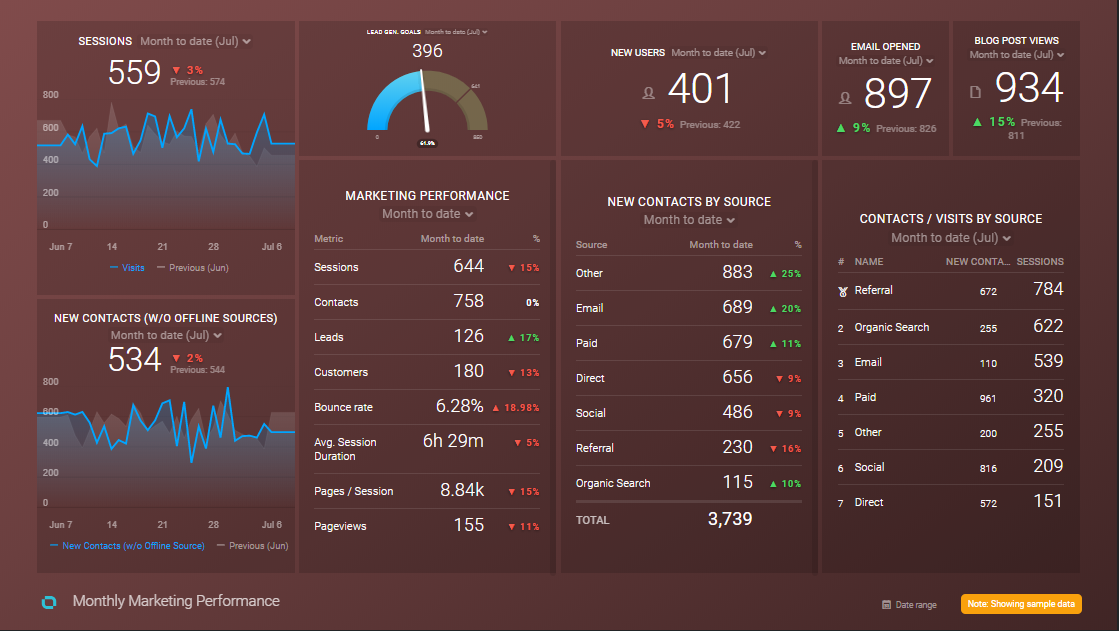-
Digital Marketing
We help you to use your digital potential. For a strong positioning, more visibility and more leads.
Get Growth ready
With the BEE.Transformance model, we bring continuous and profitable growth to your company. A new mindset for your team.
Industries
We transform your challenges into opportunities through the experience we have gained from projects in these industries.
-
HubSpot Services
As a HubSpot Diamond Partner, we help you implement your digital growth strategy with a focus on performance - by implementing and integrating new and existing systems as well as 3rd party apps.
HubSpot Thought Leader
As a HubSpot Diamond Partner with +50 certifications, host of the HubSpot User Group Zurich, HubSpot Trainer and HuSpot User Champions, you have access to in-depth HubSpot expertise.
HubSpot Solutions
The BEE.Theme offers you more creative freedom than any other theme on the market. Whether you're a beginner or a professional, a creative mind or a digital agency - with the BEE theme, you can easily unleash the maximum power for your pages in HubSpot CMS.
-
BEE.Blog
Knowledge around digital marketing, digital sales, technology, data intelligence and employees.
Knowledge Base
Pure knowledge: everything essential concentrated, compact, digitally prepared for you and ready to download.
What is inbound?
The most effective way to successfully combine digital marketing and digital sales.
-
BEE.Team
The BEE.Performers: many different characters - with one thing in common: the fascination for a digital world.
References
More than 100 large and small companies have already started with BEE: to more visibility, more performance, more growth.
Invest
Participate in the growth of BEE and become part of the BEE Growth Story by purchasing Digital Share Tokens.
We're hiring
Become a BEE.Performer! Are you ready for your own transformation?
HubSpot Reporting: Best Practices and Things You Must Know
Sales and marketing reports are powerful tools you can rely on when making essential business decisions and planning for the future. Each campaign you launch opens the door to an influx of data that can help you understand the performance and effectiveness of that campaign.
You'll gain insight into the number of new contacts you've generated, whether the leads fit your ideal buyer persona, how impactful your emails and landing pages are at driving conversions, and whether the money you're spending on advertising is getting the results you expect.
HubSpot's sales and marketing reporting features are unparalleled in terms of quality and user-friendliness. Easy to create dashboards simplify how quickly and efficiently you can share results across your company, reassuring key stakeholders that your efforts are driving the business in the right direction.
What is marketing and sales reporting?
Marketing and sales are key activities in your business that help keep your audience engaged and interested in your company's products or services. Marketing may play a more centralised business role, creating on-brand content and communication used by your regional sales team to convert leads into buyers.
Reports around these activities are usually timebound –– related to a specific timeframe in which a campaign was executed –– and are generated monthly or annually. Sales and marketing reports will share data on key deliverables ( were they achieved? ) and other metrics that affect the success of a campaign, for example:
- website traffic
- bounce rate
- leads
- sales qualified leads (SQLs)
- marketing qualified leads ( MQLs)
- response time to leads
- opportunity win rate
- customer lifetime value (CLV)
- new sales
- revenue
To summarise, sales and marketing reporting will feature traffic and engagement metrics, conversion metrics, and a detailed summary of how sales and marketing efforts have impacted the business financially.
We have compiled even more digital marketing KPIs for you in our guide.
Basics of HubSpot reporting
HubSpot gives you access to tons of metrics. You can track the number of social media followers you have across different platforms, website visitors, conversions, and campaign-generated leads –– HubSpot places everything at your fingertips.
But of course, you don't want to struggle with analysis paralysis. That's why you need structured reports that help you tease out the critical information you need to understand your company's performance. To help you get started, we'd like to talk about some of the essential reports you can run and what they can do for you.
Buyer persona segmented reports
When you segment your reports by buyer persona type, you can use the data to create more effective strategies that target specific parts of your audience. For example, some personas may be more responsive to a particular communication channel and more engaged with the content delivered in a specific format.
Diving deeper into your reporting and segmenting by buyer persona can reveal insights you may have skipped over when looking at the report in its broader format.
Uncover the top MQL sources and content types
Where is the majority of traffic to your website coming from? When you track conversions by source – i.e. what's generating marketing qualified leads (MQLs) – you can examine your funnel more objectively and focus on the traffic sources that are getting the best results while optimising the ones that aren't performing too well.
A step further is to examine the content that's driving your MQLs. Which pages, via which channels are helping you convert the most? You need a good understanding of this because, essentially, it's the content that helps your leads self-educate and move through your funnel. So if a piece of content you created hoping to bump leads into the next stage of the buyer's journey isn't converting, it may be time to evaluate its performance and value.
Lead generating content - What's getting your leads ready for the next stage?
Before someone becomes a qualified lead, they're just a normal lead – they've somehow come across your content, but you haven't yet profiled them as MQLs. Eventually, these leads will convert to MQLs if they fit your buyer persona, but how do you tease this information out?
With HubSpot, you can create a report that shows which URLs have contributed to lead conversions in order of importance. This type of information allows you to show your leads content that would typically turn them into MQLs and help you shorten the time it takes for them to convert.
Which content turns your MQLs into customers?
As leads move through the awareness, consideration and decision stages of the buyer's journey, you'll want to pay close attention to which content actually helped you make sales. HubSpot's reporting can help you track which content has been most successful in assisting MQLs to make that final decision to spend their money with you. Once you have this data, you can leverage your highest converting content to make sure you're seizing sales opportunities instead of wasting your energy redirecting them to content that's not as impactful.
Analyse the actions that your website's visitors take
Knowing whether your website is really working for you is critical. This means you need to scrutinise the effectiveness of your CTAs, the user experience (UX) that your website pages provide and whether the images or videos you use are helping leads convert through your sales funnel.
HubSpot allows you to build a report that collects data on the actions visitors take before becoming a lead.
HubSpot reporting best practices
Now that you know about the types of information you can gather and how HubSpot reports can play a key role in maximising results for your business, it's essential to apply standard best practices when you collate and analyse this data using the reports and dashboards available to you through HubSpot.
Create dashboards with purpose
Your dashboard needs to tell a story and make data easy to digest so that the stakeholders most affected by the information you present can take the right steps. To do this, you need to ensure that your dashboards have intent – it must align with the objectives of the teams responsible for the sales and marketing results the dashboard presents. Your dashboard should, therefore, focus on metrics that matter to those key stakeholders. Remember, like all other content you produce, your dashboard has to be focused on the user – curate dashboards that will be understood by the people who are expected to act on the data presented.
Set the correct date range
It's easy to skew the results when you're looking at inconsistent date ranges. To avoid leading your stakeholders to incorrect conclusions, ensure that your dashboards and reports are focused on the relevant timeframes and closely related to the activity you are tracking and when it occurred.
Make navigation easy
Although facts and figures form the basis of your business decisions, it's not always easy for everyone to consume and assimilate the data presented in reports. That's why it's important to use text and graphics consistently and create an easy-to-follow format that helps people find the information most relevant to them. Think about the layout of your dashboards and reports, the headings, and the charts you use to communicate information.
Once you set up your dashboards, don't just forget about them. You can always review and improve them by collecting feedback from users – what do they look at most often? What's most useful? What do they never look at? Are the dashboards having a positive impact on their daily activities?
Conclusion
These are just some fundamental best practices you should look to implement when creating dashboards and generating reports in HubSpot. For a more in-depth discussion, plus actionable steps on how you can customise your reports and get maximum value from your HubSpot dashboards, download our free guide, Best Practices for Gaining Powerful insights with HubSpot Reporting. We'll help you take the complexity out of reporting so that you can use the vital data your business generates every day and use it to make powerful, growth-driven decisions for your business.
Related Posts

Customer Reactivation: Why this strategy is so beneficial
Manuela Krapf | 26 Jan 2023
Acquiring new customers can be a costly endeavour for businesses, but losing them is even more expensive. That's why you should really view your existing customers as an ...
reading time: 9min
Zum Blog

Improved HubSpot Reporting with Databox
Katrin Zimmermann | 15 Dec 2022
Your business collects data from so many different sources. It's the blessing and the curse of the digital age we find ourselves in. On the one hand, you have more ...
reading time: 7min
Zum Blog

What You Need to Know About HubSpot Revenue Attribution
Yvette Veigel | 31 Aug 2023
If you put 1 Euro into a machine and got 2 Euro back, you'd keep putting your money in that machine, right? That's the essence of why marketing and sales professionals ...
reading time: 9min
Zum Blog
